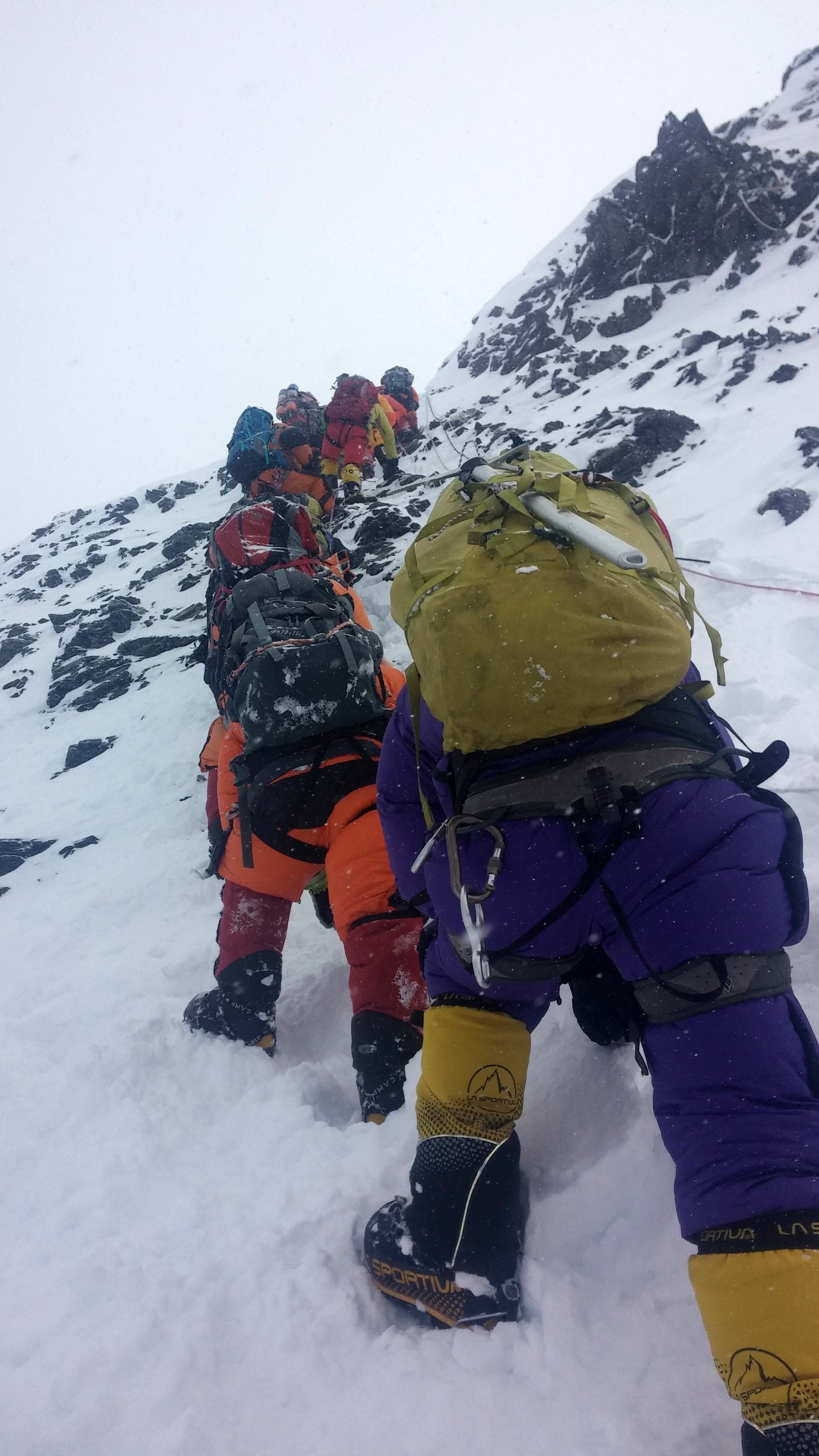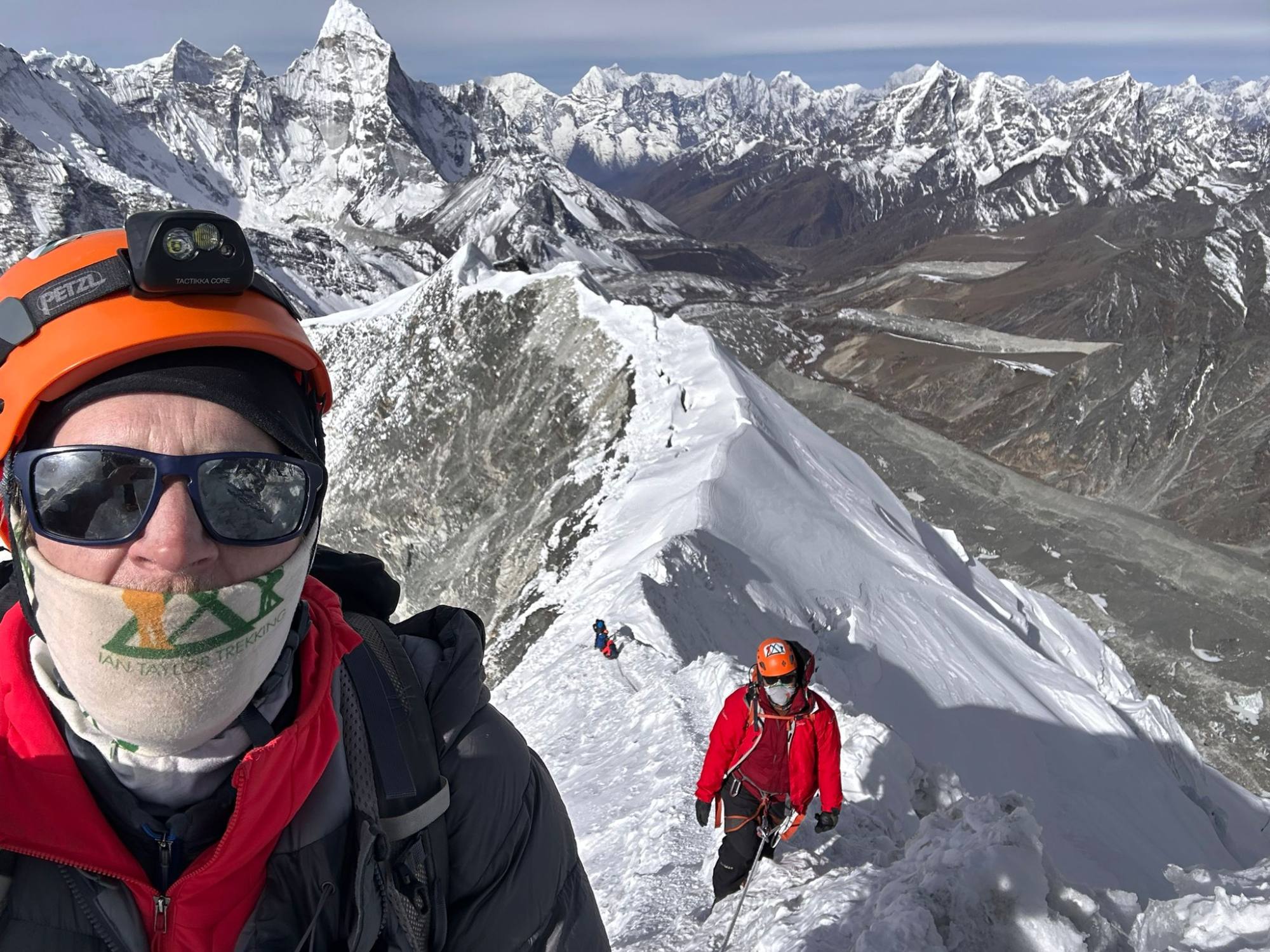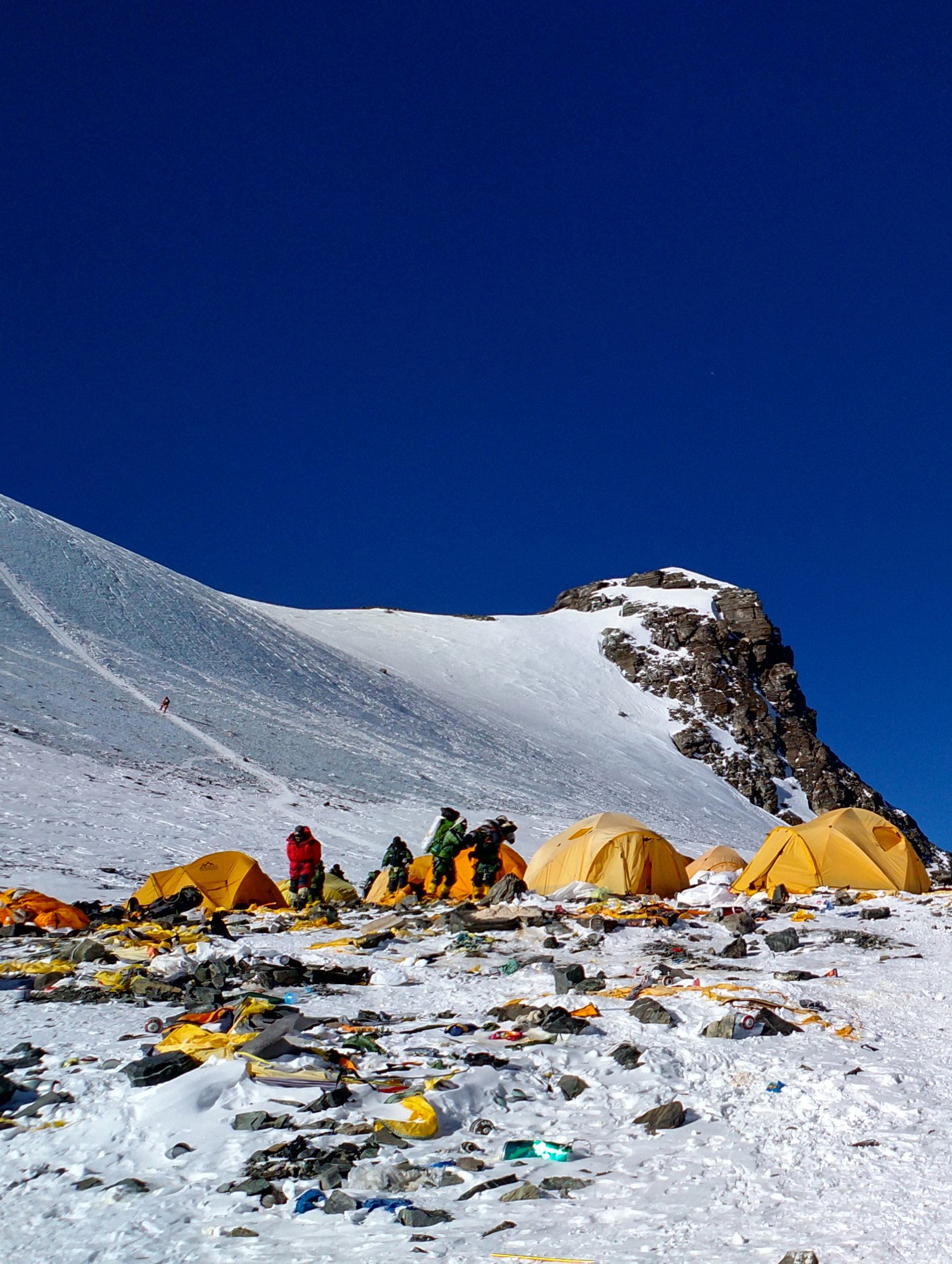The peak seasons for trekking in Nepal are from March to May and September to November, when the weather is comparatively fine. Even then the dangers are real and plentiful.

If your body does not fully adjust to the higher altitudes, the symptoms – nausea, headache, dizziness, shortness of breath – can set in quickly and become severe. At higher altitudes even the most well-trained alpinists are vulnerable.
The number of travellers to the Himalayas has increased in recent years. The Nepal Tourism Board (NTB) reported that 128,167 tourists arrived in Nepal by air in March, representing a 28.9 per cent year-on-year increase.
This poses challenges for trekkers and authorities alike.
“For these people, taking selfies with the sign of the [Everest] base camp has become a priority and this can compromise the safety of others in the mountains.”

“Some companies want to make more money off of people wanting a quick selfie and people don’t always understand what a monumental challenge climbing can be,” he says. “You can’t become a doctor just because you wear a white jacket.”
Ideally, people would build leg strength and endurance before attempting a trek, he says. “You’re going to walk 14 hours a day, carrying a heavy load on your back for six to eight days,” he says.
Taylor recommends prospective trekkers train with weights while climbing hills and stairs for months before their visit to Nepal.
He says he has seen many rookie mistakes in recent years, including trekkers and guides showing up to treks with little or no preparation – or worse, drunk.
If you lose your life while at the summit, your body can’t be brought back, and climbers are always wary of this danger
Preparedness aside, the sheer volume of trekkers is a problem, and the Nepalese government has instituted new rules.
All trekkers have to pay for a Trekkers’ Information Management System card, which can be obtained only through a government-approved trekking agency.
The rule was well intended – to couple clueless trekkers with an experienced guide; however, very little of the money raised trickles down to local communities, or to the guides, many of whom are overworked and underpaid, says Manisha Thapa, a 26-year-old amateur trekker, and one of the few from Nepal to be found on the trails.
“Based on my experience, commercialisation has really hit Everest,” she says.
This was especially evident when Thapa reached Lukla, in Nepal’s Khumbu Psanglhamu region, which is the starting point for most hikes to Everest base camp and has a small domestic airport.

“I realised why it’s called a dangerous airport,” Thapa says.
Aircraft must use a single runway – often in terrible weather – and huge crowds put a lot of pressure on the airport.
“There were many fancy restaurants, bakeries, clubs and bars [in Lukla],” Thapa says.
“It must be hard to get supplies up and down,” she adds.
Much of the overcrowding on the trails is a result of travel agencies trying to outdo each other in terms of customer numbers, says Raj Kumar Shrestha, a former porter on Everest who changed to become a mountaineering guide, and has no regrets.
Microplastics are in Everest’s snow and in its lakes. As a Nepali, I feel terrible, because this our heritage
“The Nepali porter bears the heaviest burden, and quite literally,” Shrestha says. “From tents to gas cylinders, they carry three to four times their body weight up the steepest slopes, often earning no more than US$15 a day and spending up to US$10 in expenses such as food and accommodation.”
Many tea houses provide free accommodation for porters, but not all.

As tourism in Nepal swells, so does the problem of pollution and rubbish. “The garbage I’ve seen littering my country in the most beautiful, seemingly inaccessible places is heartbreaking,” Shrestha says.
There have been an increasing number of clean-up campaigns, including an annual one led by the Nepalese army, but not nearly enough, says Shrestha, who runs his own.
“We need better discipline to deal with waste – to practise sustainable travel where everyone is responsible for picking up their own trash.”

However, the new rule applies only to the tiny group of elite climbers who attempt to reach the summit – only 6,664 climbers managed to do so between 1953 and January 2024.
Regulations concerning plastic and other rubbish on the lower slopes do exist, says Thapa, but they need to be enforced.
“Research articles show that microplastics are in Everest’s snow and in its lakes. As a Nepali, I feel terrible, because this is our heritage.”
Climbers heading for the summit using the South Col route must pass through five camps after Everest base camp on a journey that takes roughly a month.
In between base camp and the next camp (6,065 metres), at the base of Changtse sits the dangerous Khumbu Icefall (between 5,486 and 5,791 metres).

Dramatic forces of nature are at play here, not least the fierce winds of the polar jet stream, which tend to ease off a little in May.
There is also a significant risk of landslides and avalanches, and heavy rainfall.
“The problem isn’t the human waste on the mountain, but the fact that they should only be allowing 200 people to attempt the summit at any given time, but there is easily double that figure during peak season,” he says.
Amid the crowding, guides can be lifesavers, says Thapa. “However, if your oxygen cylinder backfires or if the sherpa who guides you falls sick, then you would need emergency evacuation.” And rescue by helicopter is almost impossible at high altitudes, he adds.
“If you lose your life while at the summit, your body can’t be brought back, and climbers are always wary of this danger,” Taylor says.

The helicopter rescue option is being abused by people who are only two or three days into a trek “because they’re so ill-prepared”, Shrestha says. “That ruins the experience of a very unique and special place for the rest of us.”
Now more than ever, Taylor says, Nepalese authorities need clear laws in place with regard to conduct on the mountains and overcrowding, as climate breakdown causes temperatures to rise and glaciers to melt.
On April 16, for instance, it was announced that nobody had yet set foot on the Khumbu Icefall this year because water from melting glaciers had made it too treacherous. As a result, a human traffic jam is expected later in the season, when this stretch is again passable.
“At this rate all of the glaciers will be gone in the next 10 years,” Taylor says. “If that happens, it could deeply impact trekking. We won’t have enough work for our staff.”
His company employs 150 local staff and usually runs 30 trekking trips a year. Preparing for the worst, he is building sustainable businesses, such as in ropemaking, and setting up hotels and restaurants.
“We’re aware that we climb on the backs of others,” he says. “There are a lot of people helping and supporting climbers. We need to think more about their long-term future.”
